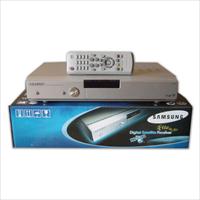FTA, receiver, television, channels, TV, digital

Free-to-air (FTA) is a term used to describe television (TV) and radio broadcasts, which are broadcast, unencrypted and may therefore be picked up via any appropriate receiver. The term should not be confused with free-to-view, which describes TV, which is available without subscription, but which is encoded and may therefore be restricted geographically. Neither of these options can be described as pay-TV, which describes a subscription service, which is encrypted. The term typically refers to delivery by satellite television, but in various parts of the world where encrypted digital terrestrial television channels exist, broadcast on UHF or VHF bands, it can also be applied to those systems.
Although these channels are described as free to use, the viewer does in fact pay for them. Some are paid directly by payment of a licence fee or voluntary donation, where as others are paid indirectly for consumer products and services where part of the cost goes toward television advertising and sponsorship.
Free-to-air is used for international broadcasting. It can often be described as television's equivalent of shortwave radio. There are a number of competing systems in use, with early adopters having used C-band satellite dishes of many feet in diameter to receive signals which were originally analogue FM, later digital using the Motorola-proprietary Digicipher II system or later still going to Ku-band and under one-metre dishes with most often the international DVB standard. The following are the types of Free-to-air Receivers:
Satellite Dish
A satellite dish is a special type of parabolic antenna designed with the purpose of transmitting signals to and/or receiving from satellites. A satellite dish is a particular type of microwave antenna, which comes in varying sizes and designs, and is most commonly used to receive satellite television.
Satellite Television
Satellite television is television delivered by way of communications satellites, as compared to usual terrestrial television and cable television. In many areas of the world satellite television services supplement older terrestrial signals, providing a broader range of channels and services, including subscription-only services.
Set Top Box
The term set-top box describes a device that connects to a television and some external source of signal, and turns the signal into content, which is then displayed on the screen. The signal source might be an ethernet cable, a satellite dish, a coaxial cable, a telephone line, Broadband over Power Line, or even an ordinary VHF or UHF antenna. This means any or all of video, audio, Internet webpages, interactive games, or other possibilities. A set-top box does not always need to contain a tuner of its own. A box connected to a television set's SCART connector is fed with the baseband television signal from the set's tuner, and can ask the television to display the returned processed signal instead. This feature is used for decoding Pay TV, and in the past was used for decoding teletext, before decoders became built-in. The outgoing signal can be of the same nature as the incoming signal, or even an "insert" over the original signal, thanks to the "fast switching" feature of SCART whereas in case of Pay TV, this solution avoids the hassles associated with having a second remote control.
About the Author:
FTA- http://www.ftafilesupport.com File Support in your one-stop place for the latest fta files, fta keys and fta bins. Watch fta satellite TV hassle free with our reliable and affordable fta support.
Submitted By: Jeff Herder
 Back and Next - Back and Next
Back and Next - Back and Next See Also - See Also
See Also - See Also